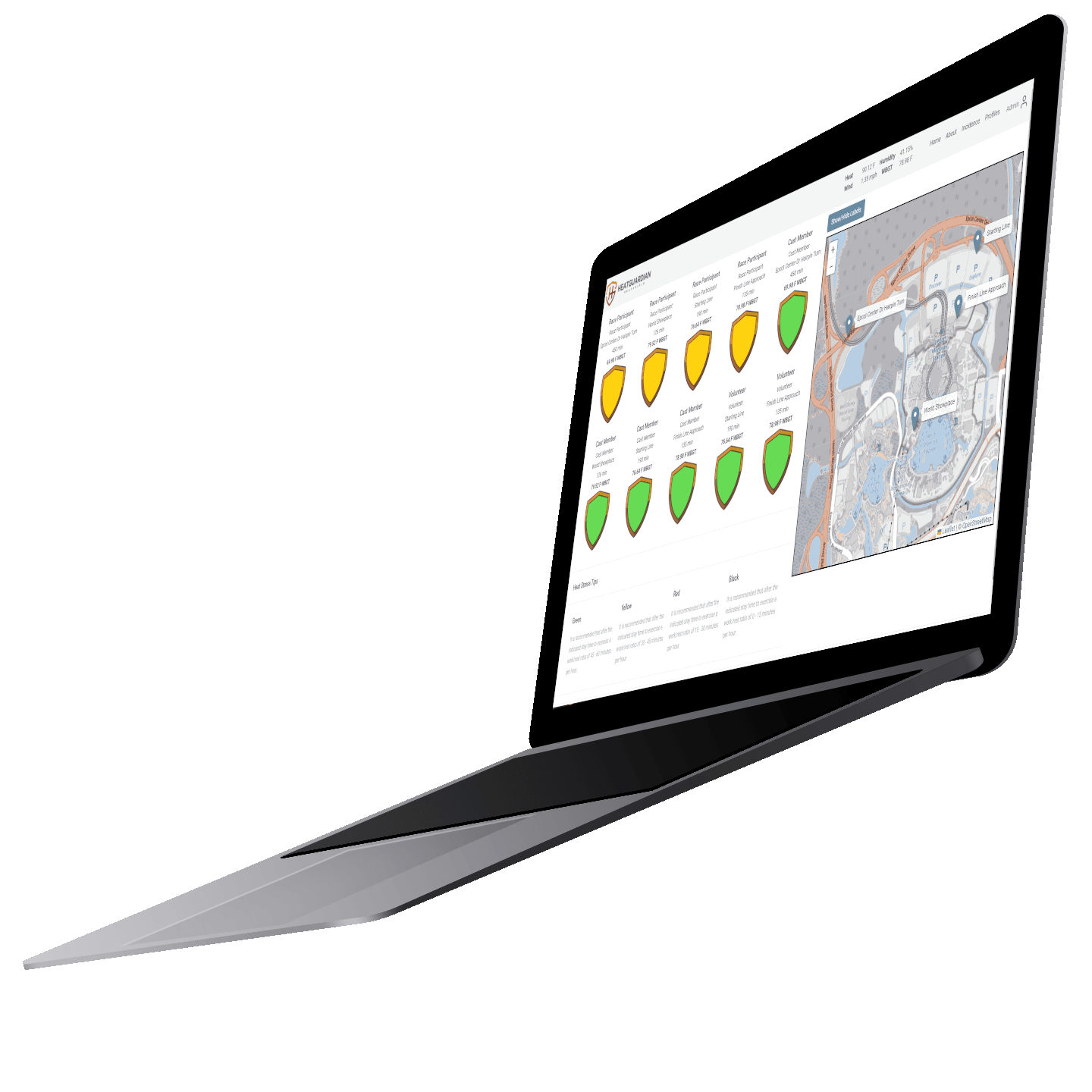Subscribe Today
HeatGuardian Microclimate System
- HeatGuardian Base Station
- 3 Climate sensors
- Optional : Base and pole for portable units
- Optional : LTE SIM Card for connectivity
- Optional : Solar powered unit
HeatShield Software Subscription
- Localized climate information in connection with monitoring up to 10 job profiles
- Additional profiles available for additional $45/month each
Frequently Asked Questions
What is Heat Ilness?
Heat illness occurs when the body is no longer able to dissipate heat effectively. Sweat is no longer able to assist in cooling the body down, and a person’s temperature will continue to rise.
What causes fatigue in the heat?
In extreme summer heat, or in prolonged periods of outdoor exposure to hot temperatures, our bodies work overtime to regulate how we feel. It takes massive amounts of energy to maintain a normal and consistent body temperature, moreso on very hot days. All this energy use can cause us to feel tired and sluggish.
Heat Stress proactive prevention at work
Adjust the work schedule, if possible. Assign heavier work on cooler days or during the cooler part of the day.Reduce the workload. Increase the use of equipment on hot days to reduce physical labor. Establish a schedule for work and rest periods during hot day
What is the difference between HeatGuardian and the regular weather data ?
The accuracy of the HeatGuardian system is driven by on-site ground level Micro Weather Sensors that collects and integrates real-time localized environmental factors, including but not limited to, temperature, solar radiance, wind speed, lightning, and Wet Bulb Globe Temperature.
The weather data you get from your local TV channels or internet sites is taken at a much higher location (usually 30ft or more) and is not accurate or ideal when calculating the heat stress index.
How many units do i need?
HeatGuardian base system includes 1 Base Station and 3 Climate Sensors. However you van connect up to 20 Climate Sensors to the same Base Station, given that they are placed in an area that is within 500ft to 1000ft of line of sight. If your area if larger than this, you might need to add a second Base Station. You can have as many base stations as you need to cover a large site.
How do I power the units ?
HeatGuardian Base Station is powered by 120v AC. You can also add an optional solar powered module that will have the base station run off a battery. Climate sensors include a solar system and can operate without external power.
Is the system easy to install ?
As part of our professional services portfolio, HeatGuardian can provide on-site survey and can suggest the best locations for the base station and the climate sensors to be installed. This professional service is charged on top of the base price of the HeatGuardian system. Additionally we can also suggest certified installers that can provide installation to your company. We have an extensive network of certified partners in the US and Canada.
What is Heat Exhaustion?
Heat exhaustion is the body’s response to an excessive loss of water and salt, usually through excessive sweating. Heat exhaustion is most likely to affect: The elderly. People with high blood pressure. Those working in a hot environment
What is Occupational Heat Stress?
Occupational heat stress is the net load to which a worker is exposed from the combined contributions of metabolic heat, environmental factors, and clothing worn which results in an increase in heat storage in the body.
Heat stress includes a series of conditions where the body is under stress from overheating. Some employees are more likely to have heat disorders than others. Employees with heart, lung, or kidney disease, diabetes, and those on medications are more likely to experience heat stress problems. Diet pills, sedatives, tranquilizers, caffeinated drinks, and excessive alcohol consumption can all exacerbate heat stress effects.
What is Acclimatization?
Acclimatization is a biological process that an individual will go through to adjust to a stimulus following continued exposure. Physiologically, acclimatization to heat will allow a worker’s body to more efficiently cool itself when exposed to high temperatures. When a worker has adjusted to working in a hotter environment, they will have a lower heart rate, earlier onset of sweating, and increased blood flow to blood vessels near the skin, allowing their body to more efficiently cool itself than a worker who is not acclimatized.
What is clothing insulation index ?
One clo, equivalent to 0.155 m2·°C/W(0.88 ft2·h·°F/Btu), is the amount of thermal insulation in an outfit that will keep a person comfortable in a room at 70°F with normal ventilation. A clo value of 0 corresponds to a naked person. An overall insulation – or Clo – value can be calculated by simply taking the Clo value for each individual garment worn by a person and adding them together. The mean surface area of the human body is approximately 1.8 m2.

